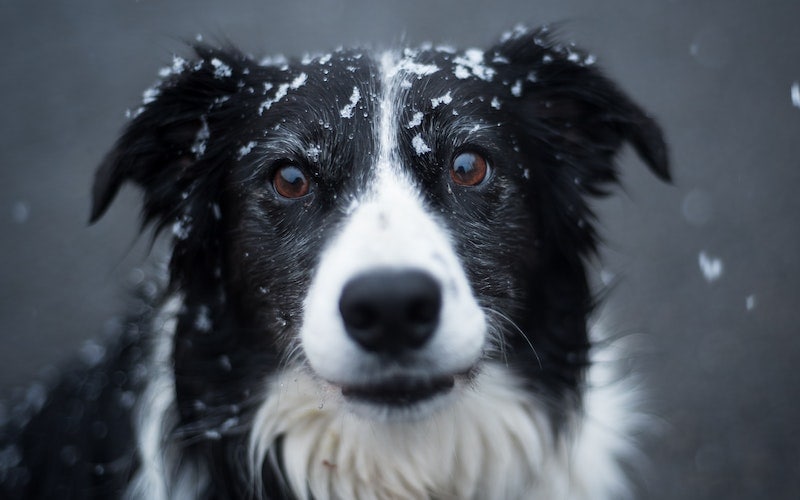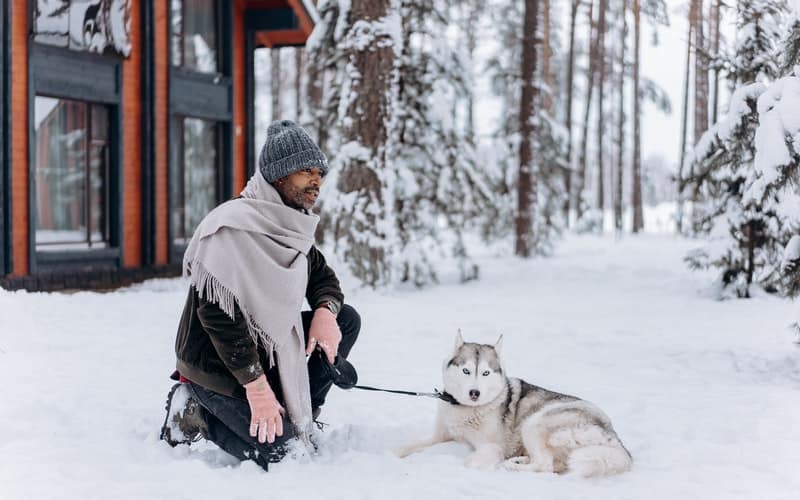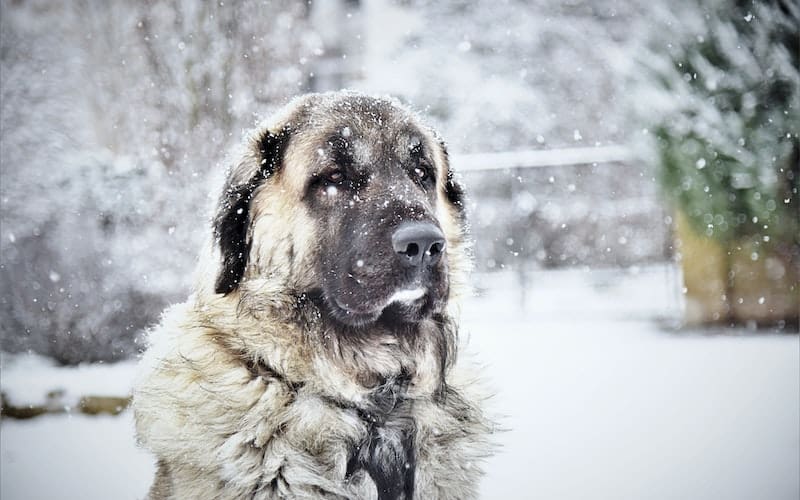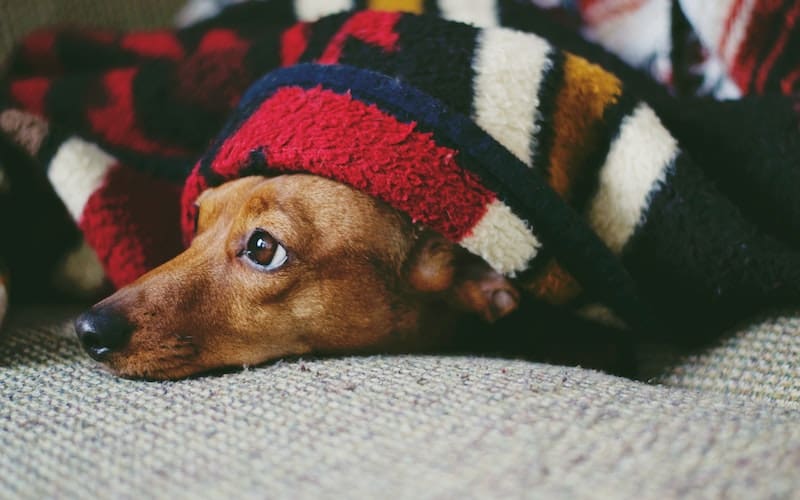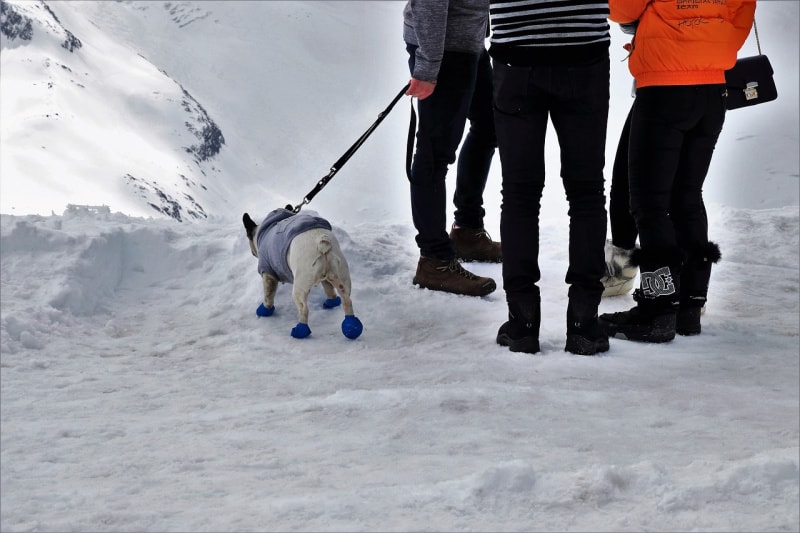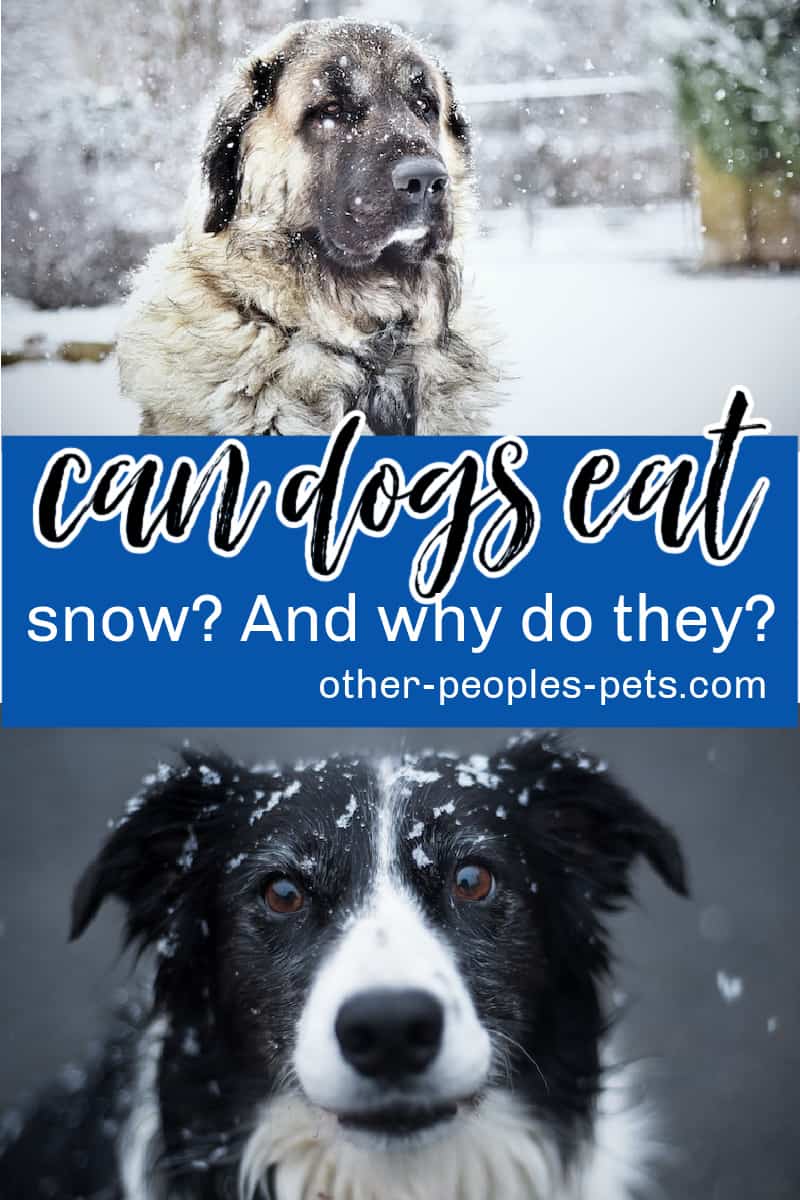Last Updated on October 21, 2023 by ellen
So, is eating snow bad for dogs? Can dogs eat snow and what does it do to your dog’s core body temperature if it does?
Posts may be sponsored. This post contains affiliate links, which means I will make a commission at no extra cost to you should you click through and make a purchase. As an Amazon Associate I earn from qualifying purchases.
Table of Contents
Is Eating Snow Bad for Dogs?
Have you ever seen your dogs eat snow? Eating snow isn’t necessarily bad for your dogs. However, it does have an impact on your dog’s body temperature.
While it can be amusing to watch your canine companions frolicking and munching on snowflakes, as pet owners, it’s vital to ensure their safety and well-being. Dogs, like humans, have a core body temperature that needs to be maintained for optimal health. If this temperature drops drastically, it could lead to hypothermia, a serious condition that can be life-threatening.
You may wonder, “How much snow consumption is safe for my dog?” or “What should I do if my dog eats a lot of snow?” It’s important to understand the potential risks and know what steps you can take to prevent any harm. The following sections delve deeper into these concerns, providing you with the necessary information to keep your dog safe during those frosty months.
Why do dogs eat snow?
Dogs might eat snow for a variety of reasons. One of the simplest explanations is that they are just being curious. Dogs love to explore their surroundings and snow, being a different texture and temperature, could intrigue them. It’s also fun – they might see it as a kind of frozen treat. Plus, if they see you playing in the snow, they may want to join in the fun too!
However, there can also be other reasons. Your dog might eat snow because they are thirsty and snow is just frozen water after all. But remember, this may not be safe, especially if the snow is dirty or contaminated. In some cases, excessive snow-eating can also indicate a health issue, like dehydration or certain nutritional deficiencies. Always keep an eye on your dog’s behavior and consult a vet if you notice anything unusual.
Can snow upset a dog’s stomach?
Yes, snow can potentially upset a dog’s stomach. While fresh, clean snow poses minimal health risks, dirty or contaminated snow can carry harmful bacteria or toxins that may cause stomach upset if ingested. Also, the sudden ingestion of cold snow can cause stomach discomfort for some dogs. Always ensure your pet has access to clean water to discourage them from eating snow.
The dangers of eating contaminated snow
While fresh snow might seem clean and harmless, it can sometimes contain harmful substances. These can include dirt, chemicals, or even bacteria and parasites. If your dog eats snow that is contaminated, it can lead to various health issues.
Dirt or pollutants in the snow can cause stomach upsets, while bacteria or parasites could lead to more serious digestive problems. Chemicals like antifreeze, which are often used in winter and can end up in snow, are extremely toxic to dogs.
Never use rock salt in an area where your dog plays. Eating snow with chemicals like rock salt can cause thirst, vomiting, lethargy and kidney disease. Ice melt is not pet-friendly.
Eating snow contaminated with such substances can lead to symptoms like vomiting, and excessive thirst, and in severe cases, it can cause kidney damage or even be fatal. So, it’s crucial to keep a watchful eye on your pet and avoid letting them eat snow in areas where these contaminants might be present.
Why do dogs love snow?
If you see your dog eat snow, it may be just because they love the cold weather. Freshly fallen snow is fun for everyone. If your dog is prone to eating show, keep them away from dirty snow or yellow snow.
If you’re concerned about your dog eating snow while they enjoy the winter wonderland, a little snow that is clean is fine for dogs to eat.
Signs of hypothermia in dogs
Hypothermia in dogs is a serious condition where a dog’s body temperature drops below normal. It typically happens when a dog has been exposed to cold temperatures for a long period, like if they spend too much time playing in the snow. There are several signs that your dog might be suffering from hypothermia.
Shivering: This is often the first noticeable sign. Your dog might shake or shiver uncontrollably because their body is trying to generate heat.
Lethargy: Your dog might seem unusually tired or unresponsive. They could be slower in their movements or might not want to play or even move much.
Weakness: In severe cases, hypothermia can cause weakness. Your dog might stumble or have trouble standing or walking.
Other signs: Other signs can include a cold body, especially the ears and the feet, slow breathing, and in severe cases, your dog might even collapse.
If you notice any of these signs, it’s important to take action immediately. Try to warm your dog up gently and call your vet right away. If left untreated, hypothermia can be life-threatening.
What to do If your dog shows signs of hypothermia
If your dog shows signs of hypothermia, here are the crucial steps to take:
Get your dog warm: Move your dog to a warm, dry area as soon as possible. Wrap them in warm blankets. You can also use a hot water bottle wrapped in a towel but never apply it directly to the skin as it can cause burns.
Contact a vet: Call your veterinarian immediately. Even if your dog seems to be warming up and feeling better, hypothermia can have serious effects that aren’t immediately visible. Your vet can provide further instructions and tell you if you need to bring your dog in for a check-up.
Monitor your dog: Keep a close eye on your dog. Look for improvements, but also be aware that they might get worse. If you see any new symptoms or if your dog’s condition doesn’t improve, get them to a vet right away.
Remember, it’s always better to be safe than sorry. Always seek professional help if you’re unsure about your dog’s condition.
Precautions during snowy weather
Here are some simple steps to protect your dog during snowy weather:
Observe your dog: Always keep an eye on your dog when they are playing or spending time in the snow. Look for signs of discomfort like limping, constant lifting of paws, or slowing down.
Limit time outside: Avoid letting your dog stay out in the cold for too long. Frequent, shorter outdoor playtimes are better than long periods in the snow. These dog jackets can help.
Use pet-safe deicers: If you use deicers on your property, make sure they are pet-friendly. Many deicers contain chemicals that can harm your dog if they ingest it. This is a great option.
Check for snowballs: After each outdoor trip, check your dog’s paws and fur for snowballs. These can hide in their fur and cause discomfort or even frostbite.
Provide warm shelter: Always make sure your dog has a warm place to retreat. If your dog lives outside, provide a well-insulated dog house.
Remember, your furry friend relies on you for their safety. It’s your responsibility to ensure they can enjoy the winter season safely. These winter dog walking tips can help.
Preventing snow ingestion in dogs
Preventing your dog from eating snow is pretty straightforward if you follow these simple steps during wintry weather:
Provide Fresh Water: Always make sure your dog has access to fresh drinking water. This can reduce their temptation to eat snow when they are thirsty.
Supervise Outdoor Play: Keep a close eye on your dog when they are playing outside in the snow. If you see them starting to eat the snow, distract them with a toy or a game.
Teach the “Leave It” Command: Training your dog to understand and obey the “leave it” command can be really helpful. You can use this command when you notice them trying to eat snow.
Clear a Path: If possible, shovel a small area of your yard down to the grass for your pet to use. This can help reduce the amount of snow they consume when they are outside.
Remember, the goal isn’t necessarily to stop your dog from ever eating snow – a little bit is generally harmless. But these steps can help minimize the risk of them ingesting too much or eating contaminated snow.
So, is eating show bad for dogs? In conclusion, while the sight of our furry friends frolicking in the winter wonderland can be quite a joyful spectacle, it’s essential to ensure their safety. The winter season, with its snow and cold temperatures, carries potential hazards for dogs.
From hypothermia to ingesting contaminated snow, various risks need our attention. By being vigilant, understanding the signs of possible problems, taking necessary precautions, and seeking timely professional help when needed, we can ensure a safe and enjoyable winter for our four-legged companions. Remember, a little vigilance can go a long way in keeping our pets happy and healthy!

Ellen runs a small pet sitting business in southern Vermont. She has experience with a variety of small animals, dogs and cats. She has also cared for ducks, chickens and rabbits. Combined, she has over 20 years of experience in pet care and pet sitting.
